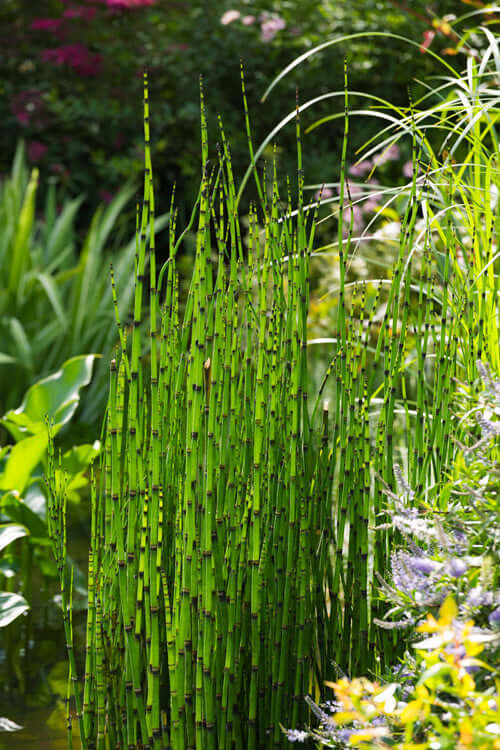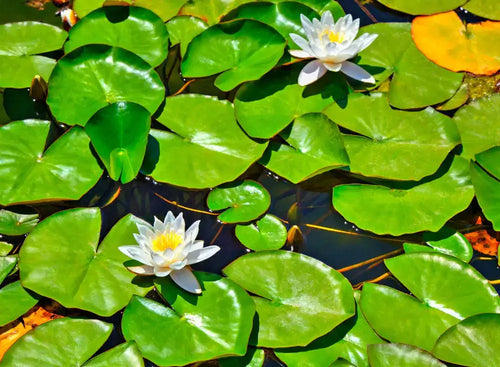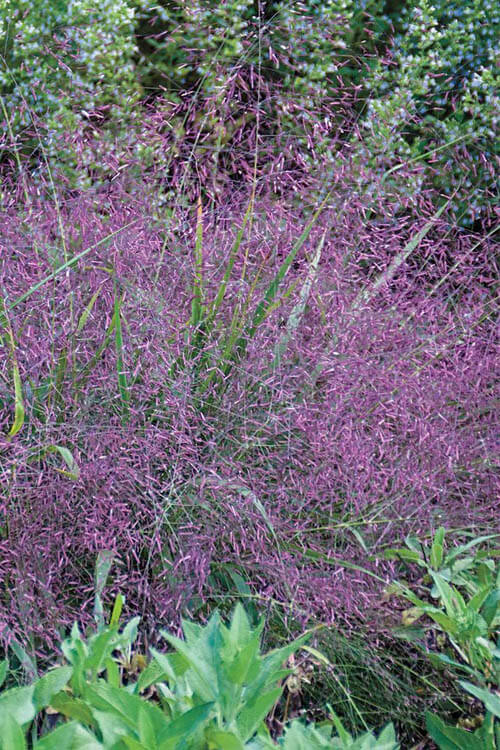Water has always held a special place in human culture and natural landscapes. Its soothing, reflective qualities and the life it sustains have drawn people to its shores for centuries. In landscaping, water features are essential for creating tranquil, inviting environments. Incorporating native water plants into these designs not only enhances their beauty but also offers numerous ecological benefits.
Types of Native Water Plants
Aquatic Grasses Aquatic grasses are an integral part of marine ecosystems, providing habitat and food for various aquatic organisms. They come in multiple shapes and sizes and are often used to stabilize the shoreline. Examples of native underwater grasses include cattails (Typha spp.), bulrushes (Schoenoplectus spp.), and wild rice (Zizania spp.).
Floating plants are characterized by their ability to drift on the water's surface. They are essential in preserving water quality by absorbing excess nutrients and providing shade, reducing algae growth. Examples of native floating plants include water lilies (Nymphaea spp.) and duckweed (Lemna spp.).
Submerged aquatic plants grow entirely underwater and provide vital oxygen for marine creatures. They also help to stabilize the lake bottom, preventing erosion. Some native submerged plants include pondweeds (Potamogeton spp.) and eelgrass (Zostera spp.).
Emergent plants grow partially submerged and partially above the water's surface. They offer essential nesting sites for waterfowl and habitat for fish. Some common native emergent plants include marsh marigold (Caltha palustris) and pickerelweed (Pontederia cordata).
Benefits of Native Water Plants in Landscaping
One of the primary benefits of native water plants in landscaping is their ability to control erosion. The root systems of many aquatic plants help to bind the soil, preventing corrosion caused by water currents. This is particularly important in areas with unstable shorelines.
Native aquatic plants are crucial for improving water quality. By absorbing excess nitrogen and phosphorus, harmful algal blooms and water pollution are prevented. By doing so, they help maintain a healthy aquatic ecosystem and create more precise, more attractive water features.
The presence of native water plants in landscaping enhances biodiversity by providing habitat and food for various aquatic species. Fish, amphibians, insects, and birds rely on these plants for shelter, breeding, and sustenance. Incorporating native water plants into your landscape design can create a thriving, balanced ecosystem.
Native water plants add aesthetic beauty to any water feature. Their graceful foliage, vibrant blooms, and changing textures throughout the seasons can transform a dull or stagnant pond into a captivating focal point in your landscape design. Water lilies, for example, are renowned for their stunning blossoms that float delicately on the water's surface.
Many native water plants are adapted to the local environment and require minimal maintenance. Once established, they can thrive with little intervention, making them an ideal choice for eco-conscious landscaping. Low-maintenance water plants save time, energy, and resources in landscaping projects.
The natural filtration capabilities of native water plants are invaluable in maintaining the health of your water features. They absorb excess nutrients, trap sediment, and help break down pollutants, resulting in cleaner water and less reliance on artificial filtration systems.
Water plants, especially those that float on the surface, help regulate water temperatures by providing shade and reducing sunlight penetration. This is essential for controlling water temperature fluctuations, which can impact the health of aquatic life.
Importance of Preserving Native Water Plants
Preserving native water plants is crucial for the conservation of local ecosystems. These plants have coevolved with native wildlife over millennia, providing critical habitat and sustenance. When introduced non-native plants take over, they can disrupt these delicate relationships.
Invasive aquatic plants, often introduced unintentionally, can overrun native ecosystems and choke waterways. Preserving native water plants helps prevent the spread of invasive species and maintains the ecological balance of aquatic environments.
Native water plants often hold cultural significance for indigenous communities. They have been used for centuries in traditional medicine, crafts, and ceremonies. Preserving these plants is not only ecologically essential but also cultural preservation.
Uses of Native Water Plants in Landscaping
Native water plants are an essential component of natural pond and lake restoration projects. They help recreate balanced ecosystems and improve water quality, making the water feature more attractive and sustainable.
Rain gardens are specially designed to capture and filter rainwater runoff, helping to prevent soil erosion and reduce the amount of pollutants in nearby bodies of water. Native water plants are excellent for rain garden landscaping because they can tolerate occasional flooding and help absorb excess moisture, preventing soil erosion.
Wetlands are among the most ecologically diverse and productive ecosystems on Earth. Native water plants are indispensable in wetland restoration projects, helping to reestablish critical habitat and improve water quality.
Waterfront properties benefit from native water plants for shoreline stabilization, erosion control, and aesthetic enhancement. These plants create a harmonious transition between land and water, enhancing the overall landscape.
Sustainable water features like ponds, water gardens, and fountains can be enhanced with native water plants. These plants contribute to the ecological balance of the water feature and reduce the need for chemical treatments.
Native water plants are a vital component of wildlife gardens, attracting various birds, insects, and amphibians. Observing these creatures can add an enjoyable and educational dimension to your landscaping.
Native water plants are invaluable assets in landscaping, offering a wide range of environmental benefits and aesthetic appeal. They contribute to erosion control, water quality improvement, biodiversity enhancement, and temperature regulation. Preserving native water plants is essential for maintaining healthy aquatic ecosystems and preventing the spread of invasive species. By incorporating these plants into your landscaping projects, you can create sustainable, attractive, and ecologically conscious environments that harmonize with nature's beauty. Whether restoring a natural pond, designing a rain garden, or simply adding beauty to your waterfront property, native water plants are a versatile and environmentally responsible choice for any landscape.




















































